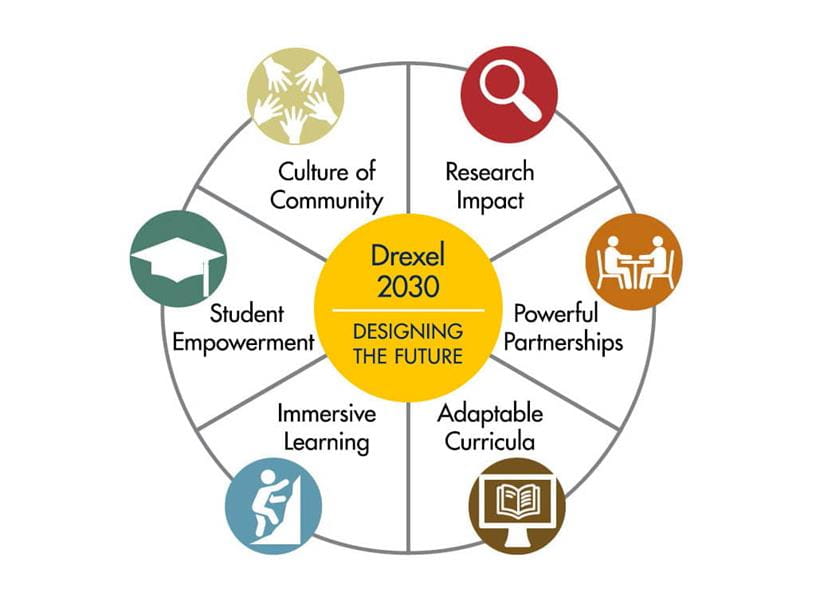
Drexel 2030
Designing the Future
Drexel University’s Strategic Plan, Drexel 2030 – Designing the Future, provides a road map for the University to fulfill its mission, better the campus experience, and enhance community impact.
Tracking Progress
Drexel University is tracking progress toward strategic goals through a set of key performance indicators that focus on enhancing reputation and improving student experience.
Undergraduate, one-year retention rate
89.5%
Increased 5%
U.S. News "Best National Universities"
#86
Improved 12 spots
Total research expenditures (NSF HERD)
$169MM
Up $17 MM
Overall job satification rate of graduates
96%
Increased 4%
Learn more about how Drexel is tracking progress toward 2030.

Drexel University's shared values provide the foundation and guidance for all decision-making and the actions of all community members.

Drexel University has identified six imperatives that will guide us in building a sustainable culture of education, scholarship and collaboration.

Learn about Drexel University's Strategic Plan, developed under the direction of an Executive Planning Committee chaired by President John Fry that began work in October 2019.
A strategic plan is intended to make our University a better place for its entire community.
- Elisabeth J. Van Bockstaele
Chief Strategy Officer

Learn about Drexel University’s Strategic Plan and what it measures and means for the community in and around Drexel.